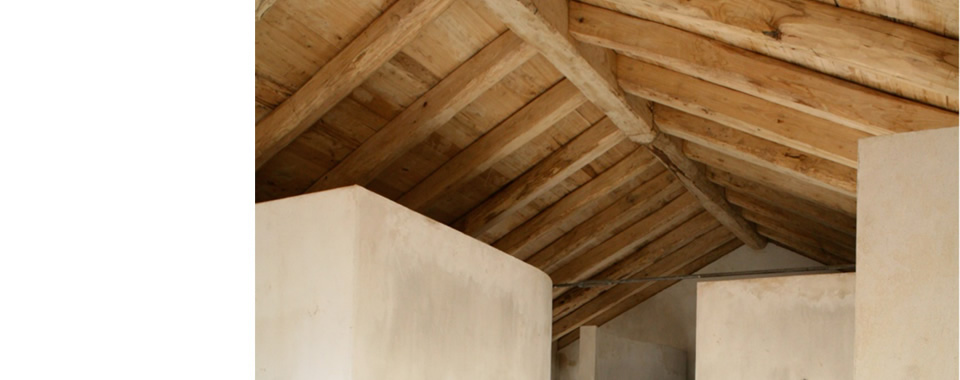

Score - Sustainable Construction in Rural and Fragile Areas for Energy efficiency
Guidelines for Integrated territorial Planning:
Water resource (rain collection, etc)
The following guidelines come from a deep analysis of case studies, norms, and regulations, relating at both national and regional levels. This analysis is summarized in a card that can be downloaded in French language.
Today, there are alternatives to the discharge of waste water in the public network. They are motivated partly by the saturation of some sewage treatment plants, but also by the desire of community to limit the use of chemical and biological products and therefore reduce the associated pollution. For the current wastewater (from toilets, showers, houses, ...) there are now natural and ecological solutions. Indeed some plants (reeds, ...) have the virtues of natural filtration. When the cost of grid connection is important and that the floor space is not a problem, it is possible to use the natural filtration. The wastewater passes through several settling ponds and / or abatement that are planted, so filtered water is discharged directly into the environment. If presence of groundwater or surface streams, the specific French regulation (loi sur l’eau) guiding the process which is controlled by the water police. These techniques which require precise sizing, a slight over-investment, but under a low maintenance (cut of plant species) can achieve a quality landscaping. This technology allows the creation of wetlands, which hold a specific biodiversity and encourages its development. The main technical obstacle is the floor space needed for this kind of solution. Of course the nature of the soil infiltration capacity is to be considered, and an outlet once the water is treated. There are also many psychological barriers. Conventional sewage treatment plants offer a bad image of wastewater treatment. In fact these solutions are often the source of olfactory nuisance. However the filter basins, if adequately sized, are not a source of odor because they do not use biological technology. There are a lot of examples with many years in operation, which are not subject to any complaints from residents. These lessons learnt should be developed to encourage these alternatives.
Indication for the bio-construction action planIn Mediterranean countries, these techniques could be used to value water, which is a rare and valuable resource. In fact this water once cleaned on site, can be used for watering or maintenance of outdoor spaces or participate in the landscape (fountain ...). These techniques are not related to the building, they can be easily implemented in renovating historic buildings. To develop these technical solutions, which limit the charges of maintenance to the local community, it should introduce special fees by local communities. A work day could be launched at a European level to compare different technologies and to provide solutions depending on the climate and also geographical constraints. Indeed, some solutions are now very space consuming and could be improved.
Possible criteria for MED bio-housing quality certificateCertifications applicable in France are French certification HQE (Haute Qualité Environnementale), English one (BREEAM), American LEED and local certification as Qualité Environnementale on Région Rhône-Alpes or démarche BDM (Bâtiment Durable Méditerranéen) in region PACA. All these certifications take into account the alternative treatment of wastewater by providing credit on that issue. Only certification "Habitat & Environment" in France dedicated to residential does not value this kind of solution. Unfortunately it is often in the case of individual houses grouped that this kind of solution has strong advantage, especially in rural communities.
Case studies
The case study relative to “water ressource” is given inside the card in French language that can be downloaded below, notably in “VAUGNERAY”
